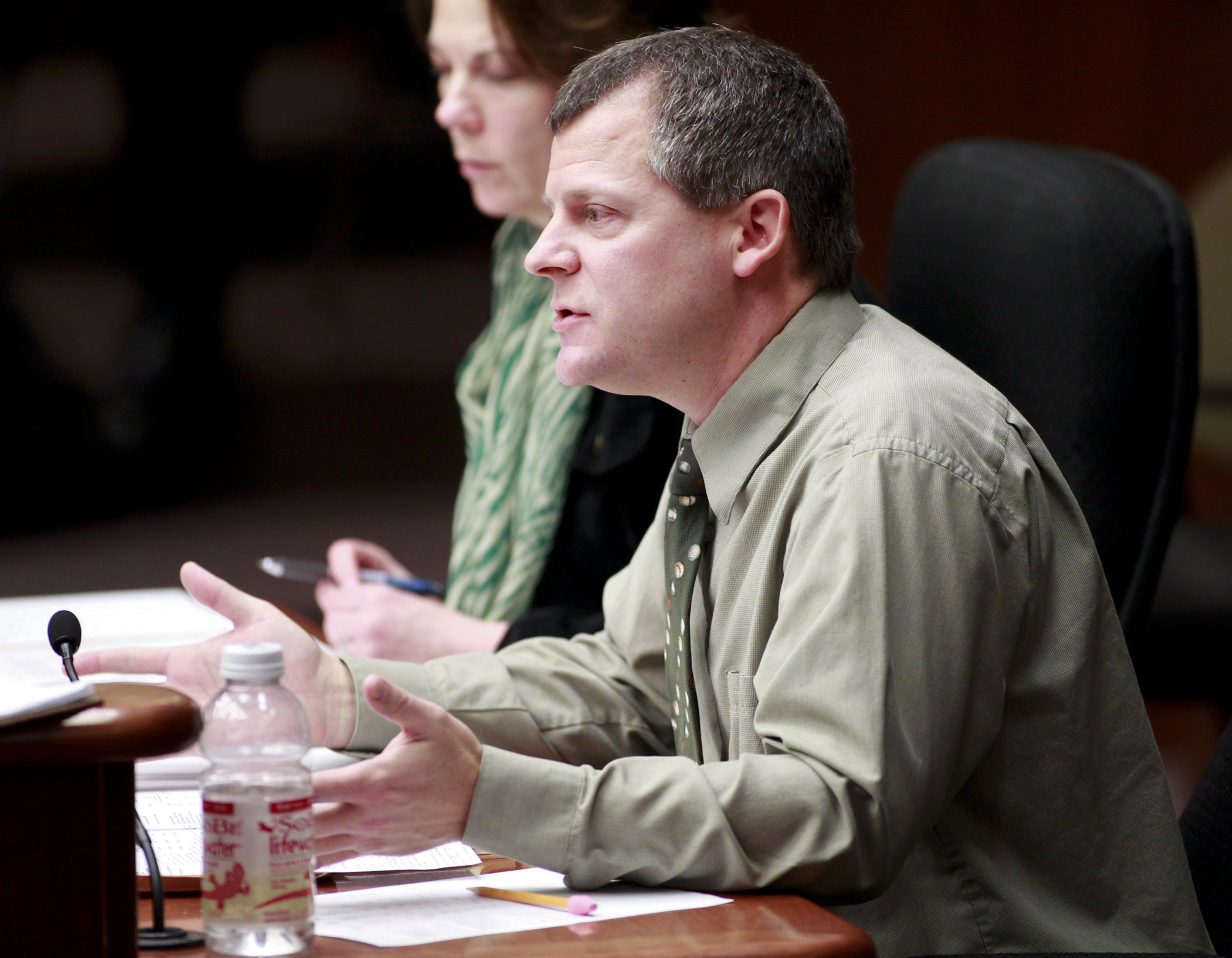Public health care funding, eligibility beset with problems
A one-two punch was delivered to the House Ways and Means Committee Monday as members learned about a projected $1.4 billion shortfall in health care expenditures for low-income people.
During the same hearing, Legislative Auditor Jim Nobles revealed that a small sample indicates an estimated 17 percent of people enrolled in the state’s Medical Assistance program are either ineligible for services or enrolled in the wrong program.
The committee took no action on either issue.
 Shawn Welch, director of reports and forecast for the Department of Human Services, testifies before the House Ways and Means Committee Jan. 26, regarding the projected increase in Medical Assistance spending. Photo by Paul Battaglia
Shawn Welch, director of reports and forecast for the Department of Human Services, testifies before the House Ways and Means Committee Jan. 26, regarding the projected increase in Medical Assistance spending. Photo by Paul BattagliaWithout any changes in law, Medical Assistance expenditures are projected to increase $1.4 billion in the 2016-17 biennium that begins July 1, 2015. The state’s overall General Fund spending is projected to increase $1.9 billion.
Medical Assistance, otherwise known as Medicaid, accounts for a little more than one-fifth of the General Fund. The projected shortfall is expected in 2017, according to Shawn Welch, reports and forecasts division director for the Department of Human Services. About half of the projected deficit is due to the “rich benefit set” for basic services to families with children, Welch said.
Rep. Tony Albright (R-Prior Lake) requested more information about the actuarial value of the services, which he said “may be on par with the platinum” plans found in MNsure. Platinum is the highest insured plan level.
Rep. Phyllis Kahn (DFL-Mpls) cautioned that if needed services aren’t provided, Medical Assistance enrollees may use more expensive forms of care.
“Emergency room care is the most costly and least effective care that anyone can get,” she said.
The ebb and flow of public health financing could also be impacted by the types of services needed as the state population gets older. The other half of the projected spending increases would be caused by higher enrollment in long-term care, elderly and disabled services.
[Watch on YouTube: Rep. Jim Knoblach says it's important to discuss the growing cost of Medical Assistance program]
The Health Care Access Fund, which was partially created to help contain costs, has been tapped to deflect deeper holes in health care spending, but that fund is slated to have its own $62 million deficit by 2017, Welch said.
“There is no mechanism to pay it back. We are relying on a revenue source that is going away,” said Rep. Matt Dean (R-Dellwood). He chairs the House Health and Human Services Finance Committee.
Medical Assistance is jointly funded between the federal and state governments. Under the Affordable Care Act, the federal government incentivized states to shift more enrollees into Medical Assistance, which Minnesota did. However, beginning in 2018, the federal cost share is slated to incrementally drop and the state would have to assume a larger percentage of the costs for adults without children enrollees.
The second punch to the Human Services Department was lobbed by a legislative audit that revealed the department did not adequately verify people who enrolled in public health care programs through MNsure.
Of 193 people tested on program eligibility, 32 were identified as ineligible for their enrolled program. Nobles said he is frustrated and troubled that benefits verification issues raised 10 years ago still plague the department.
An updated audit report with recommendations is scheduled for release in February, Nobles said.
Related Articles
Search Session Daily
Advanced Search OptionsPriority Dailies
Ways and Means Committee OKs proposed $512 million supplemental budget on party-line vote
By Mike Cook Meeting more needs or fiscal irresponsibility is one way to sum up the differences among the two parties on a supplemental spending package a year after a $72 billion state budg...
Meeting more needs or fiscal irresponsibility is one way to sum up the differences among the two parties on a supplemental spending package a year after a $72 billion state budg...
Minnesota’s projected budget surplus balloons to $3.7 billion, but fiscal pressure still looms
By Rob Hubbard Just as Minnesota has experienced a warmer winter than usual, so has the state’s budget outlook warmed over the past few months.
On Thursday, Minnesota Management and Budget...
Just as Minnesota has experienced a warmer winter than usual, so has the state’s budget outlook warmed over the past few months.
On Thursday, Minnesota Management and Budget...